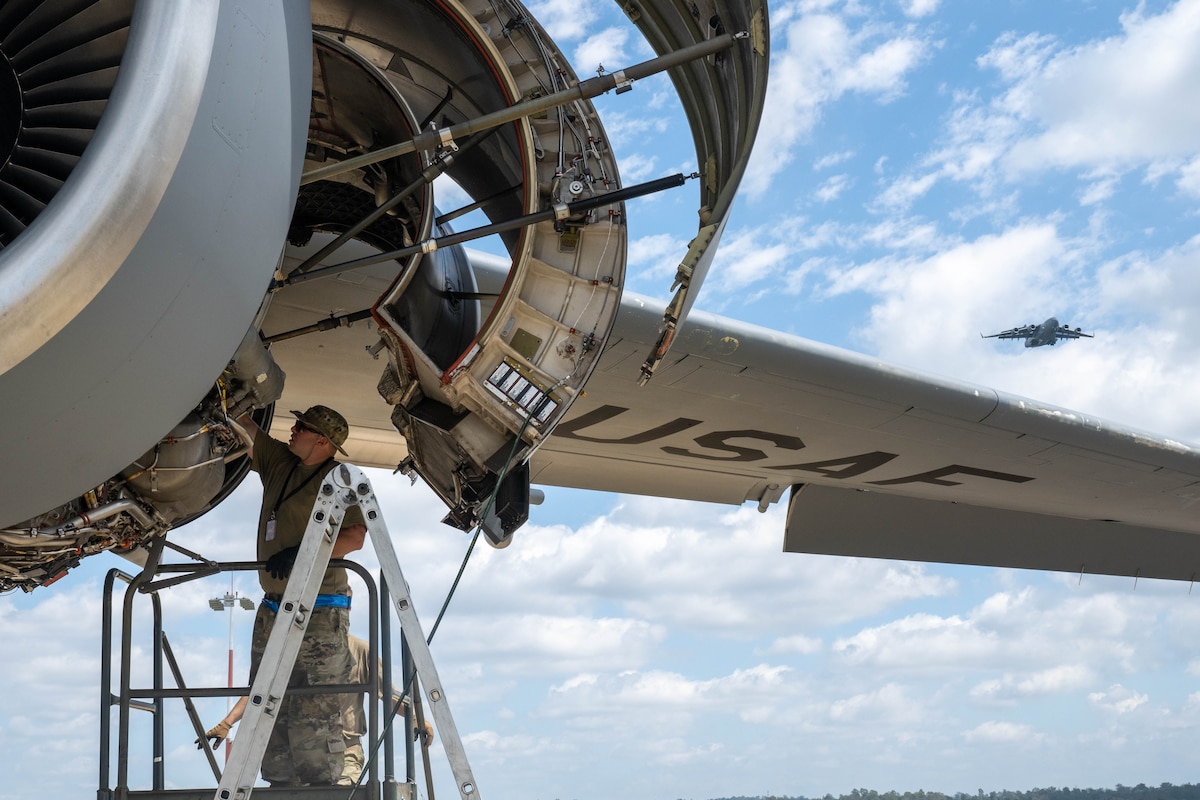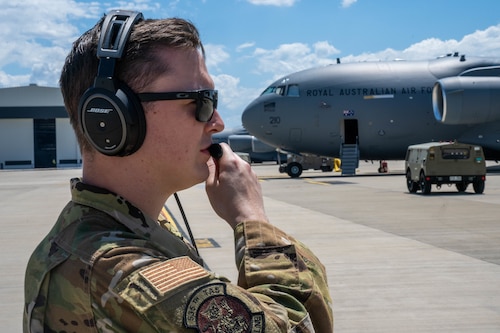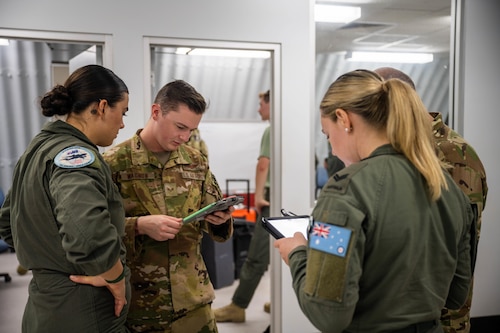U.S. Air Force 15th Wing, Royal Australian Air Force No. 36 Squadron and Royal Air Force 99 Squadron trained together during Exercise Global Dexterity 23-2 at RAAF Base Amberley in Queensland, Australia, Nov. 27-Dec. 8.
During the two-week exercise, the U.S. Air Force, RAAF and RAF integrated personnel with the goal to help develop multilateral tactical airlift and airdrop capabilities between the three nations while achieving mission success across multiple areas, including humanitarian disaster and assistance, disaster relief situation or contingency operations.
"One of the main objectives of the exercise is to allow us the opportunity to fly with multi-country crews to see the differences between techniques, tactics and procedures, but also to learn little tips and tricks that other defense forces might have that we haven't necessarily considered ourselves," said Flight Lieutenant Josh Wright, Royal Australian Air Force No. 36 Squadron pilot. "This exercise has given us the opportunity to conduct airdrop operations, air refueling, formation operations, low level tactical flight and general low level awareness training."
In addition to integrating aircrews, the RAAF, U.S. Air Force and RAF maintainers worked together to ensure all nations' aircraft were safe to train and fly daily.
"Not only are three countries flying our aircraft together, but the crews flying the aircraft are made up of all three countries," said Lt. Col. Chris Gilbert, 535th Airlift Squadron director of operations. "Once we return and hand the aircraft back to the maintenance professionals, fully integrated teams work to prepare the aircraft to fly again."
This is the first time that the RAF members have participated in this exercise working together with U.S. Air Force and RAAF members to strengthen military partnerships and demonstrate mission capabilities in wartime, peacetime and humanitarian operations throughout the Indo-Pacific region.
"It's critical as we go forward, I think, because we have an opportunity to both learn from each other and capitalize on each of our unique capabilities that we bring and learn from each other," said Col. Michael Lewis, 15th Operations Group commander. "It's those things that we bring together to sharpen each other and make each other better as a crew force across the C- 17 fleet."
During this exercise, additional training was accomplished by including Australian Defence Force cargo requirements into the mission planning and transporting ADF cargo from Momote Airport, Papua New Guinea in support of Humanitarian Assistance and Disaster Relief operations.
"It's really important to work with your mates before you have to, whether it's humanitarian assistance, disaster relief situations or a combat situation," Lewis said. "You want to work with your mates so that you know both their capabilities, as well as the things that they can't do whether it's limited by government or by fleet size or by crew size. So that's why it's so important that we're doing this now .We're learning and growing together in a way that helps us in those situations in the future if we have a humanitarian disaster."
Exercise Global Dexterity allows all three nations the unique experience of multilateral interoperability through blended aircrews and maintenance teams that work together from combined mission planning to execution. This partnership between nations is especially important given the changing strategic environment in the region.
"This training exercise is a fantastic opportunity not only for our countries, but for the Airmen that get to develop personal relationships with our Allies," Gilbert said. "We achieve interoperability and integrated deterrence only when we play together, eat together, work together, debrief together and put in the effort to make each other better."











